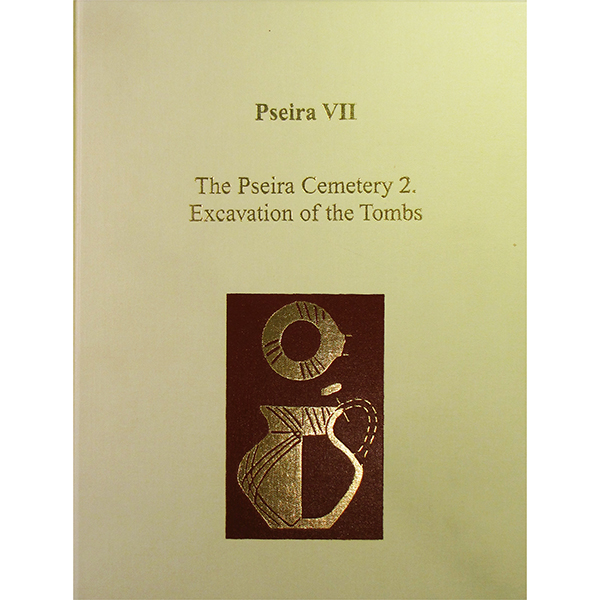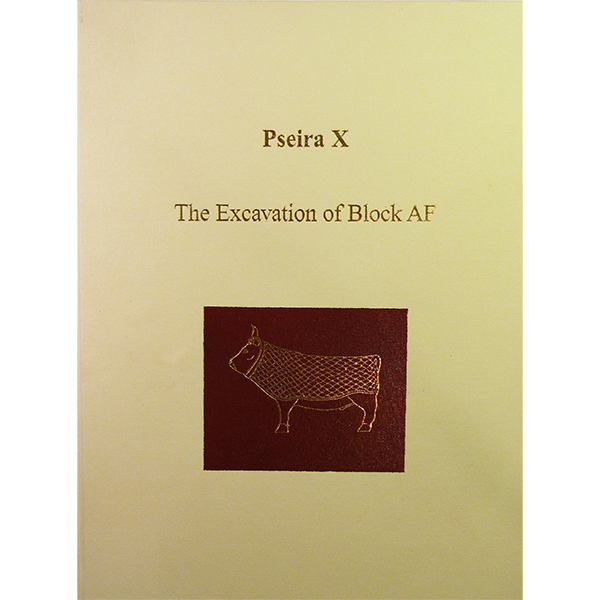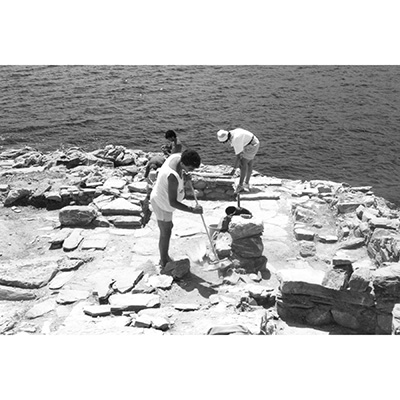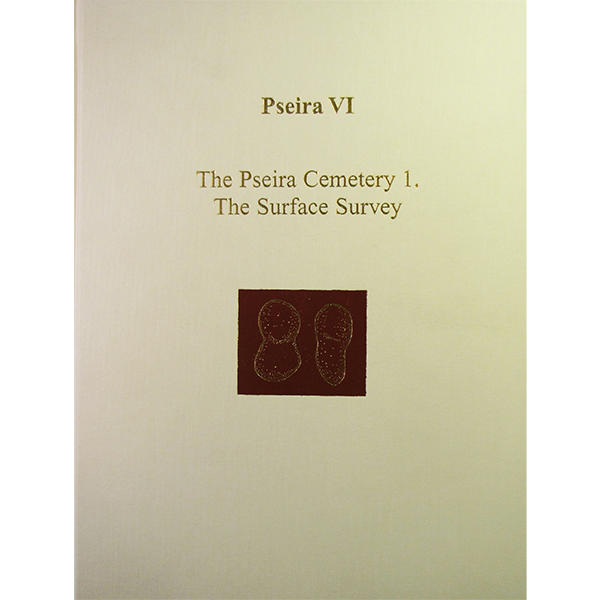Description
Richard B. Seager excavated the Minoan cemetery at Pseira in 1907, but the work was never published. The Temple University excavations (1985–1994) under the direction of Philip P. Betancourt and Costis Davaras conducted an intensive surface survey of the cemetery area, cleaned and drew plans of all visible tombs, and excavated tombs that had not been previously excavated. The results of the cemetery excavations on the small island off the northeast coast of Crete are published in two volumes. Pseira VII presents the results from the excavation and cleaning of the 19 tombs that still exist at the Pseira cemetery. The cemetery is remarkable for the diversity of its tomb types. Burials were in cist graves built of vertical slabs (a class with Cycladic parallels), in small tombs constructed of fieldstones, in house tombs, and in jars. Burials were communal, as is usual in Minoan cemeteries. Artifacts included clay vases, stone vessels, obsidian, bronze tools, jewelry, and other objects.
Contents: PART I. EXCAVATION OF THE TOMBS: Introduction (Philip P. Betancourt, Costis Davaras, and Richard Hope Simpson); 1. Tomb 1, (Demetrios Anglos, Philip P. Betancourt, Heidi M.C. Dierckx, Susan Ferrence, Mari P. Mateo, Kristalia Melessanaki, David S. Reese, and Fotini Zervaki); 2. Tomb 2 (Philip P. Betancourt, Paul Goldberg, Richard Hope Simpson, Robert B. Koehl, Olga Matzari, David S. Reese, Werner H. Schoch, and Fotini Zervaki); 3. Tomb 3 (Philip P. Betancourt, Heidi M.C. Dierckx, David S. Reese, and Vasso Zographaki); 4. Tomb 4 (Philip P. Betancourt, Polyxeni Bougia, Heidi M.C. Dierckx, Paul Goldberg, Fotini Zervaki, and Vasso Zographaki); 5. Tomb 5 (Philip P. Betancourt, Heidi M.C. Dierckx, and Vasso Sographaki); 6. Tomb 6 (Philip P Betancourt, Heidi M.C. Dierckx, and Vasso Sographaki); 7. Tomb 7. (Philip P. Betancourt, Heidi M.C. Dierckx, Olga Matzari, and David S. Reese); 8. Tomb 8 (Philip P. Betancourt, Polyxeni Bougia, Heidi M.C. Dierckx, and David S. Reese); 9. Tomb 9 (Philip P. Betancourt, Heidi M.C. Dierckx, Olga Matzari, and David S. Reese) 10. Tomb 10 (Philip P. Betancourt, Polyxeni Bougia, Heidi M. C. Dierckx, Paul Goldberg, and David S. Reese); 11. Tomb 11 (Philip P. Betancourt and Olga Matzari); 12. Tomb 12 (Philip P. Betancourt and Olga Matzari); 13. Tomb 13 (Philip P. Betancourt and Olga Matzari): 14. Tomb 14 (Philip P. Betancourt and Olga Matzari); 15. Tomb 15 (Philip P. Betancourt and Polyxeni Bougia); 16. Tomb 16 (Philip P. Betancourt and Fotini Zervaki); 17. Tomb 17 (Philip P. Betancourt); 18. Tomb 18 (Philip P. Betancourt); 19. Tomb 19 (Philip P. Betancourt); 20. Other Features in the Cemetery (Philip P. Betancourt). PART II. INTERPRETATION AND CONCLUSIONS: 21. Interpretation and Conclusions (Philip P. Betancourt); Appendices: A. Concordance of Excavation Numbers; B. Locations of Tombs: Concordance by Excavated Units; C. The Human Skeletal Remains (Robert Arnott).
Hardback: 264 pp., 45 pp. B/W figs, 22 pp. B/W photos.
(Prehistory Monographs 6, INSTAP Academic Press, 2003)
ISBN-10: 1-931534-05-5
ISBN-13: 978-1-931534-05-5














